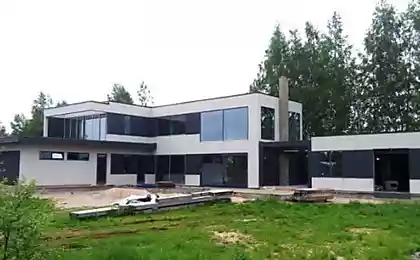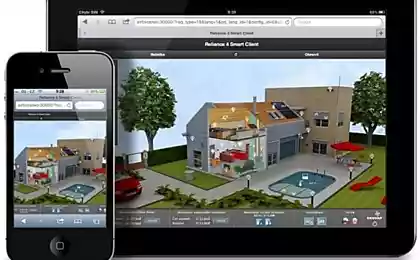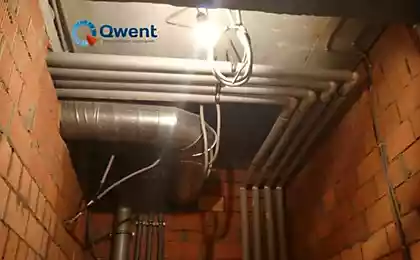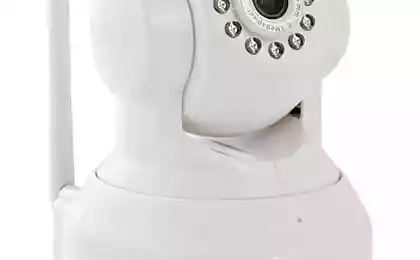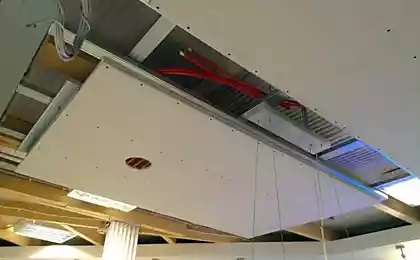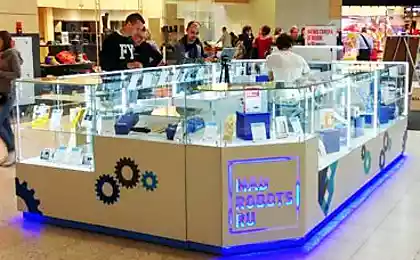693
Smart home: automation systems for residential premises and buildings
In the 1950-ies about such "intelligent" houses could only dream of or read in popular science magazines and books. The conceptual design of the automatic comfort of the home, if there was, it was called differently. Before the public appearance of the term "smart home" (smart home) was still about 20 years.
Motion sensors, warm floors, air conditioners, ventilation systems and boilers worked properly, but independently, not knowing about the existence of each other. Needless to say that the man himself had to take care of the comfort of their homes. If you opened the window and turned on the air conditioner to adjust the temperature and humidity had to manually checking the readings of outdoor thermometer with room.
Smart home Technology?That house can be smart, mass society of the middle — second half of the 20th century also knew, as he knew the engineers black-and-white TV that they will release a color model. Meanwhile, no publicly available technology and open standards on anything like the massive and expensive "the clever house" and the speech went.
For comparison, the smart home of the American billionaire-philanthropist bill gates designed and built in the late 1980-ies, at a cost of well-known businessman in fabulous 63 million dollars.
In 1975, the mess with the data transmission standards for home systems beginning to wane. The audience was presented the X10 Protocol is the first open industry standard of data transmission in home automation systems. It was a communication Protocol for electronic devices working at a frequency of 60 Hz and a voltage of 110 V in normal domestic electric network. This somewhat limited the market of the countries in which it was possible to use a compatible device. In the Soviet Union they would not have earned.
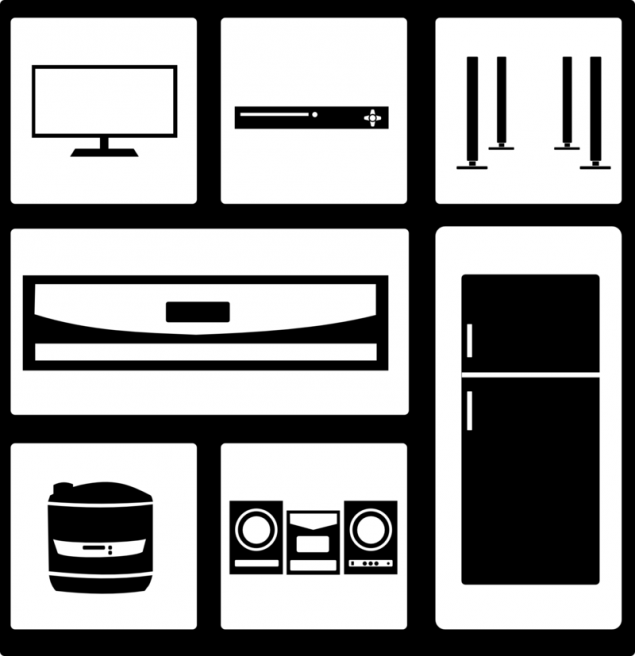
The future owner of the system home automation standard X10, it was enough to purchase the modules you need, paste them into the plug and connect to your home network through them appliances, to freely manage them. Of course, at that time, the introduction of the working modules remote management via a modem or high speed control centres, programmable scenarios could not happen.
Only in 1978, on the market there are the first modules for the X10 standard: 16 channel command console, a module to control a lamp module to control the appliance. Afterwards appeared the modules, switches and timer module. The idea is that 1978 is considered by many historians the turning point in the history of home automation and smart homes. At the same time, the purpose of the first home automation systems was the automation, not the creation of management scenarios utilities and utilities of a house.
Reasonable houseIn the early 1990-ies appeared the first commercially successful solutions and young market of home automation systems are flooded with numerous companies offering a variety of standard solutions what is called "turnkey". Such a surge was caused by the emergence of a new international standard for electronic systems, 1992, regulating the production of equipment for "smart homes" that have made possible the production of systems and products forces of almost any commercial company or firm.
The new system went from a simple automation of lights or appliances and offered scenarios, for example, the script "sleep" when the power of household lamps was decreased, the electrical appliances off, except the most important, for example, of the refrigerator, while the bedroom included air conditioning, panigassi the temperature to a comfortable level.

The scenario of "protection" is triggered when the owner left the house, and home appliances, coupled with light devices began to simulate the daily routine of residents, showing potential thieves and criminals that the house is not empty. In the case of illegal entry the alarm is triggered, which could not only inform the district of a strong sound signal about the fact of burglary, but including all appliances and lighting to scare off a potential criminal.
By the end of 1990-ies the situation in the market improved as buyers have got a choice between products of different companies and in different price categories.
So what is the point in home automation systems were called "smart homes"?In fact, the term "smart house", which is so familiar to our compatriots, is a kind of hodgepodge of values from the English-speaking world. In Western understanding, there are several definitions of a smart home, depending on the format, scale and purpose of the use: this home automatization, smart home and smart house. Each represents a well-defined sector of the market.
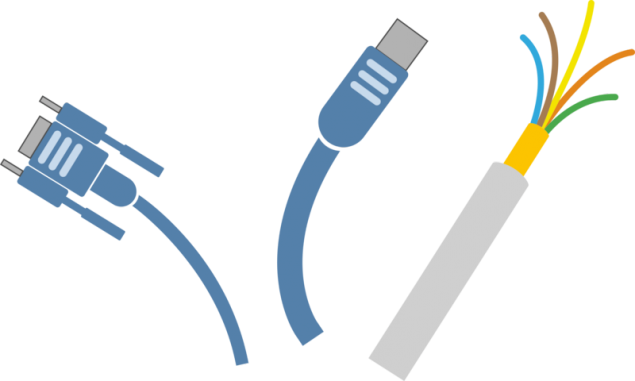
Accordingly, home automatization is a home automation system; smart home — smart home; smart house — intelligent buildings. In Russian "smart building" incorporates all of the above concepts and added new ones. For example, multirama (management of multimedia and home cinema, music centre), which in the West is strictly modern home smart home and often represent comparable in complexity and cost with smart buildings turnkey solutions.
Smart house"Smart house" for the Russians is, first of all, compact home solutions that automate routine processes in house: on and off light; to check the status of appliances, for example, iron, or refrigerator; install nanny Cams to monitor a small child; to adjust the operation of the climate control (Underfloor, heating, ventilation, air conditioning, etc.); to do all this remotely, preferably from a mobile device, not from home but from work, on the road, or in another city or even abroad.
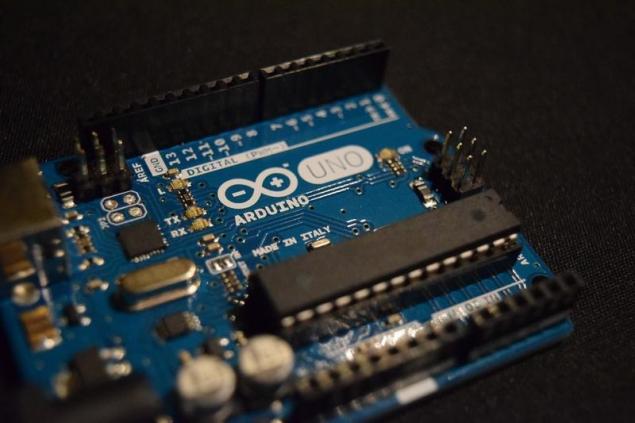
Today there is no need to think — how to make smart home? Now ready decisions of such a level is present on the market in sufficient quantity. This situation was caused by technical boom of the 1990s- beginning of 2000-ies in the Asia-Pacific region mainly in China, Vietnam, Malaysia, who were able to provide mass production of relatively cheap to produce and available in retail market as microcontrollers and individual solutions for automation systems, smart homes.
The system of "smart house"In the world the majority of commercial and residential real estate are equipped with systems or automation systems "smart house", and in Russia this process is still in its infancy. It is now clear that automation of the whole building gives many advantages, for example, reduces the costs of staff, increases the level of comfort for guests, optimizes energy consumption, water and gas, reducing harm to the environment.

In Russia for automation of entire buildings used the term AZUSA (Automated Building Management System), but in the mass consciousness of the proliferation of this technology has not received as among the ordinary citizens, the demand for computerization of a residential or industrial complex will be quite low owing the prohibitive cost of the solution. published
Source: geektimes.ru/post/280040/
Motion sensors, warm floors, air conditioners, ventilation systems and boilers worked properly, but independently, not knowing about the existence of each other. Needless to say that the man himself had to take care of the comfort of their homes. If you opened the window and turned on the air conditioner to adjust the temperature and humidity had to manually checking the readings of outdoor thermometer with room.
Smart home Technology?That house can be smart, mass society of the middle — second half of the 20th century also knew, as he knew the engineers black-and-white TV that they will release a color model. Meanwhile, no publicly available technology and open standards on anything like the massive and expensive "the clever house" and the speech went.
For comparison, the smart home of the American billionaire-philanthropist bill gates designed and built in the late 1980-ies, at a cost of well-known businessman in fabulous 63 million dollars.
In 1975, the mess with the data transmission standards for home systems beginning to wane. The audience was presented the X10 Protocol is the first open industry standard of data transmission in home automation systems. It was a communication Protocol for electronic devices working at a frequency of 60 Hz and a voltage of 110 V in normal domestic electric network. This somewhat limited the market of the countries in which it was possible to use a compatible device. In the Soviet Union they would not have earned.

The future owner of the system home automation standard X10, it was enough to purchase the modules you need, paste them into the plug and connect to your home network through them appliances, to freely manage them. Of course, at that time, the introduction of the working modules remote management via a modem or high speed control centres, programmable scenarios could not happen.
Only in 1978, on the market there are the first modules for the X10 standard: 16 channel command console, a module to control a lamp module to control the appliance. Afterwards appeared the modules, switches and timer module. The idea is that 1978 is considered by many historians the turning point in the history of home automation and smart homes. At the same time, the purpose of the first home automation systems was the automation, not the creation of management scenarios utilities and utilities of a house.
Reasonable houseIn the early 1990-ies appeared the first commercially successful solutions and young market of home automation systems are flooded with numerous companies offering a variety of standard solutions what is called "turnkey". Such a surge was caused by the emergence of a new international standard for electronic systems, 1992, regulating the production of equipment for "smart homes" that have made possible the production of systems and products forces of almost any commercial company or firm.
The new system went from a simple automation of lights or appliances and offered scenarios, for example, the script "sleep" when the power of household lamps was decreased, the electrical appliances off, except the most important, for example, of the refrigerator, while the bedroom included air conditioning, panigassi the temperature to a comfortable level.

The scenario of "protection" is triggered when the owner left the house, and home appliances, coupled with light devices began to simulate the daily routine of residents, showing potential thieves and criminals that the house is not empty. In the case of illegal entry the alarm is triggered, which could not only inform the district of a strong sound signal about the fact of burglary, but including all appliances and lighting to scare off a potential criminal.
By the end of 1990-ies the situation in the market improved as buyers have got a choice between products of different companies and in different price categories.
So what is the point in home automation systems were called "smart homes"?In fact, the term "smart house", which is so familiar to our compatriots, is a kind of hodgepodge of values from the English-speaking world. In Western understanding, there are several definitions of a smart home, depending on the format, scale and purpose of the use: this home automatization, smart home and smart house. Each represents a well-defined sector of the market.

Accordingly, home automatization is a home automation system; smart home — smart home; smart house — intelligent buildings. In Russian "smart building" incorporates all of the above concepts and added new ones. For example, multirama (management of multimedia and home cinema, music centre), which in the West is strictly modern home smart home and often represent comparable in complexity and cost with smart buildings turnkey solutions.
Smart house"Smart house" for the Russians is, first of all, compact home solutions that automate routine processes in house: on and off light; to check the status of appliances, for example, iron, or refrigerator; install nanny Cams to monitor a small child; to adjust the operation of the climate control (Underfloor, heating, ventilation, air conditioning, etc.); to do all this remotely, preferably from a mobile device, not from home but from work, on the road, or in another city or even abroad.

Today there is no need to think — how to make smart home? Now ready decisions of such a level is present on the market in sufficient quantity. This situation was caused by technical boom of the 1990s- beginning of 2000-ies in the Asia-Pacific region mainly in China, Vietnam, Malaysia, who were able to provide mass production of relatively cheap to produce and available in retail market as microcontrollers and individual solutions for automation systems, smart homes.
The system of "smart house"In the world the majority of commercial and residential real estate are equipped with systems or automation systems "smart house", and in Russia this process is still in its infancy. It is now clear that automation of the whole building gives many advantages, for example, reduces the costs of staff, increases the level of comfort for guests, optimizes energy consumption, water and gas, reducing harm to the environment.

In Russia for automation of entire buildings used the term AZUSA (Automated Building Management System), but in the mass consciousness of the proliferation of this technology has not received as among the ordinary citizens, the demand for computerization of a residential or industrial complex will be quite low owing the prohibitive cost of the solution. published
Source: geektimes.ru/post/280040/

